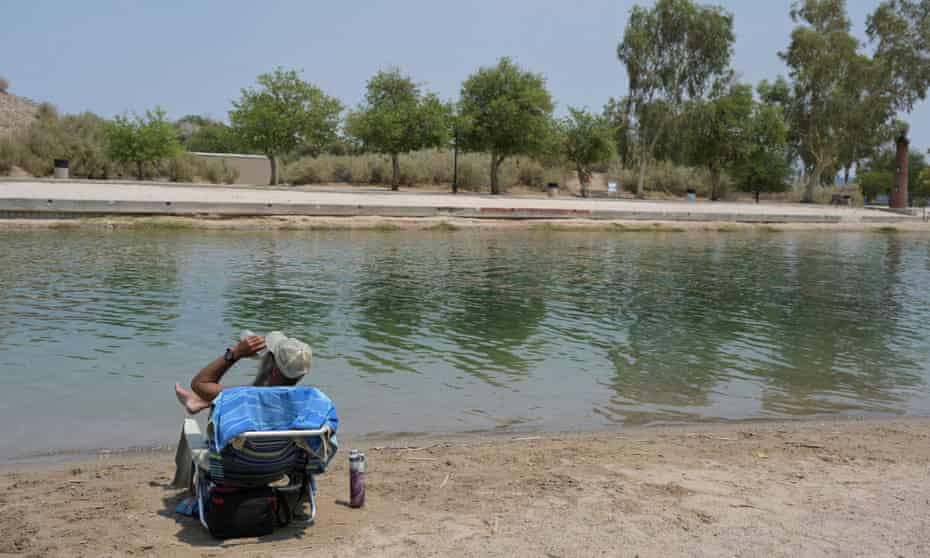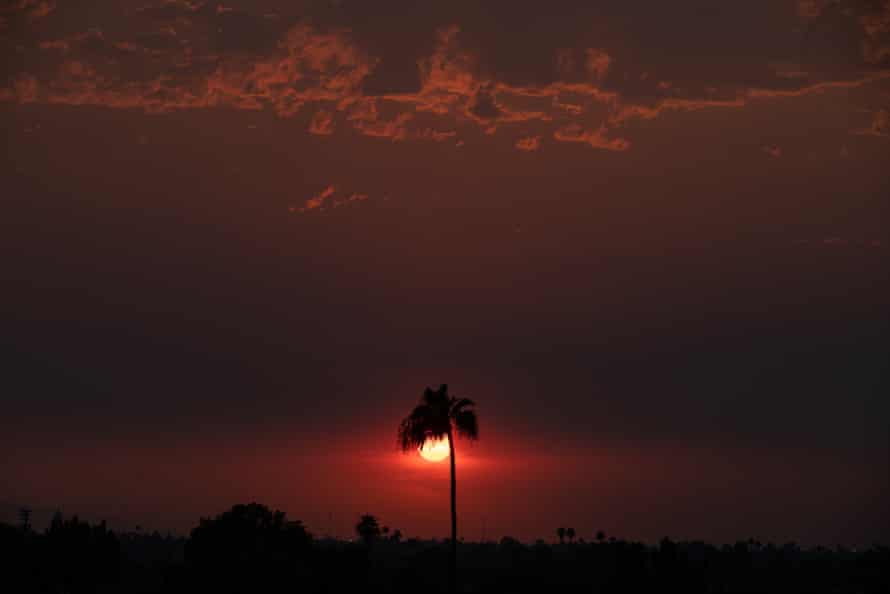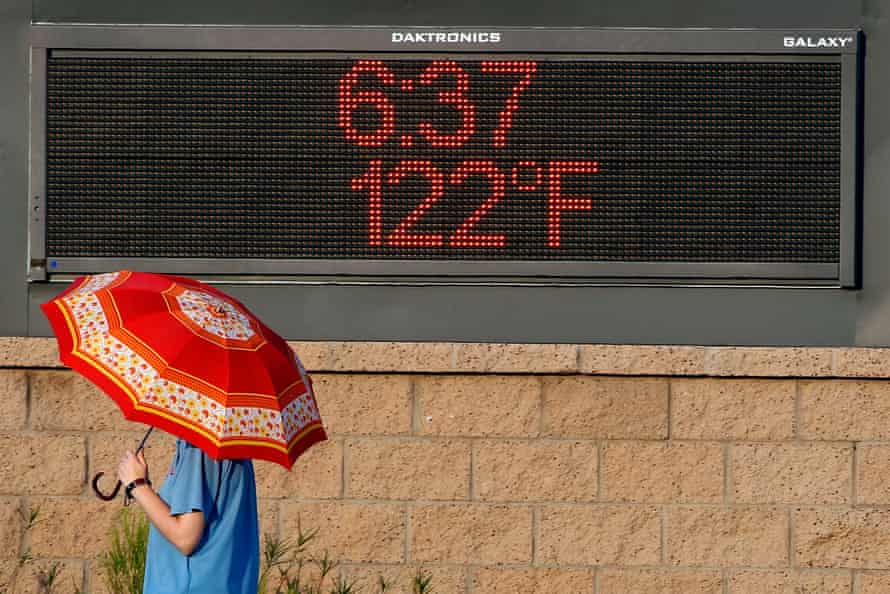Extract from The Guardian
The temperature in Phoenix is forecast to top 110F this week for the first time this summer, posing a danger for the unhoused.

Thu 9 Jun 2022 19.45 AEST
Last modified on Fri 10 Jun 2022 06.20 AESTDay and nighttime temperatures are expected to reach 7F to 10F (4C to 6C) above normal for this time of the year, which could drive a surge in medical emergencies and deaths as people struggle to stay cool amid soaring energy prices and rising homelessness.
Extreme heat is America’s leading weather-related killer, and Phoenix, in Maricopa county, is the deadliest city.
The temperature in Phoenix hit 110F (43C) for the first time this summer on Wednesday, and the National Weather Service (NWS) has warned that a band of high pressure moving across the south-west may result in record breaking – or at least record equalling – daily highs in the state capital on Friday through Sunday.
Nighttime temperatures are unlikely to fall below 80F (27C) until at least the middle of next week, posing a danger for people without access to adequate shelter or air conditioning.

Energy prices are soaring across the country, but Phoenix has the highest inflation rate among big cities at 11%, according to the latest Bureau of Labor statistics.
“We’re going to see very hot temperatures even by Phoenix’s standards and could see daily records broken,” said Paul Iñiguez, a meteorologist with the NWS in Phoenix.
“The heat risk is very high which means we’re likely to see deaths and illness increase, as well as costs associated with cooling … people should do everything they can to mitigate the impacts and check on folks who don’t have regular social contacts.”
Phoenix is America’s fifth largest city, a sprawling urban heat island without adequate shade, water, affordable housing or addiction services to meet the needs of the rapidly growing population.
The highest-ever temperature recorded in Phoenix was 122F (50C) in June 1996. Such extreme highs remain rare, but the heat season has expanded – starting earlier and finishing later – and the average number of hot ( higher than 100F) and very hot days ( higher than 110F) are increasingly common and predicted to rise significantly over the next 30 years, according to climate change models.

Nighttime temperatures have risen twice as fast as daytime highs over the past three decades, according to NWS data. The impact of heat is cumulative and the body only begins to recover when temperatures drop below 80F.
It’s a matter of life and death for the city’s growing unsheltered population, who have accounted for almost half the county’s extreme heat deaths in recent years. Fentanyl addiction is rising and substance use contributed to three out of every five heat deaths in 2021.
Zechariah Stevenson, 29, is facing a tenth summer on the streets – where five people he knew died from heat related emergencies over the past two summers. “There’s no shade, no trees, and not enough water but I have to find a way to keep cool. I’ve got used to the heat but still sometimes I worry about dying from dehydration,” said Stevenson, who uses his food stamps to buy giant cold sodas at the nearby convenience store.

“There is so much unmet need, and it’s getting worse, but the wheels of bureaucracy are running very, very slowly and there’s a lack of leadership in the state. This year could be even more deadly,” said Stacey Champion, a longtime heat activist.
Heat related deaths and emergency room visits start in April, but rise during very hot spells, official figures show.
Heat related illnesses range from an uncomfortable skin rash and cramps to heat exhaustion and deadly heat stroke. Dehydration exacerbates the risks, and health experts recommend drinking at least two litres of water an hour for those who must spend time outdoors in such sweltering temperatures. Those who can should stay indoors with the air conditioning on, and avoid foods high in protein that increase metabolic heat.
The current high pressure system is causing multiple problems.
An air quality alert is in effect for Phoenix as stagnant hot air increases the formation of ozone, a toxic chemical compound that exacerbates respiratory conditions, and could further increase pressure on emergency rooms.
Dry thunderstorms are forecast for mountainous parts of south-east Arizona on Thursday, and lightning could spark wildfires in areas parched by drought. Fire officials have warned that Arizona’s wildfire season, which got off to an early start this year, could be even more devastating than in previous years.
No comments:
Post a Comment